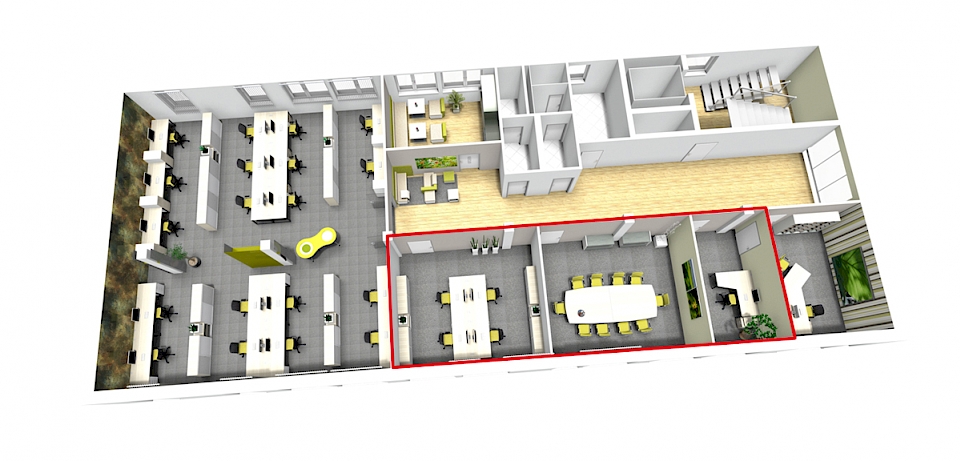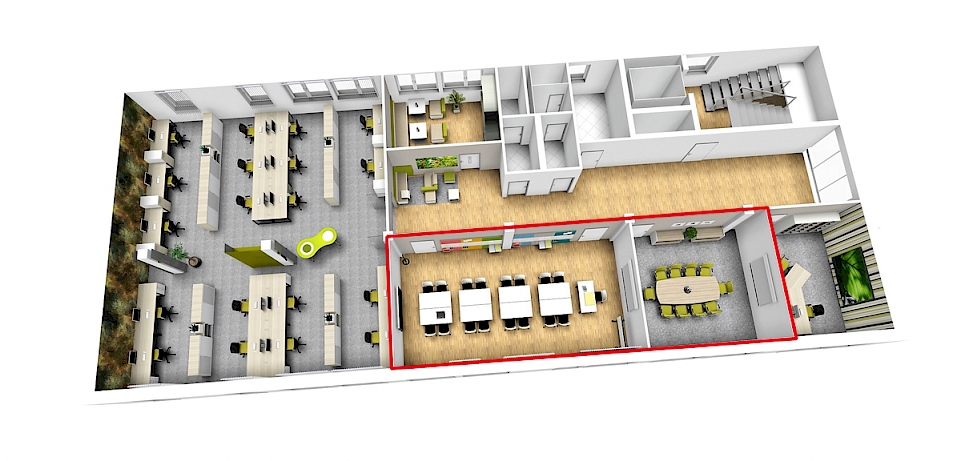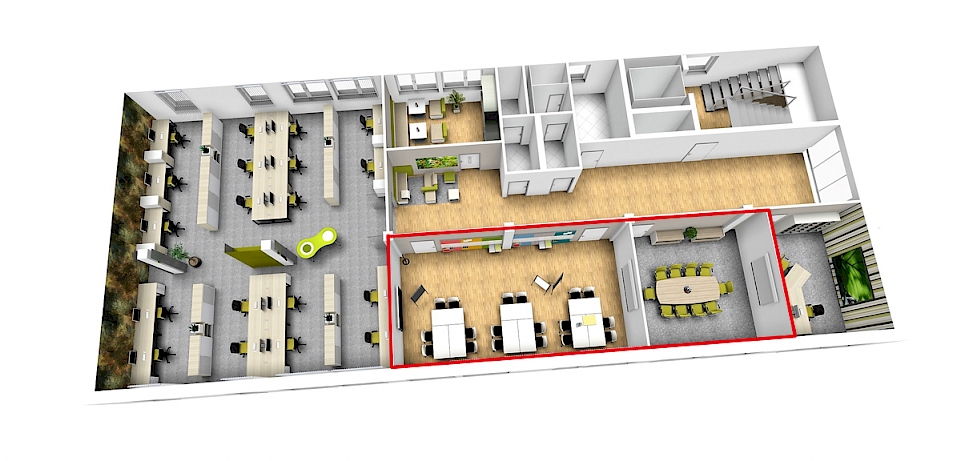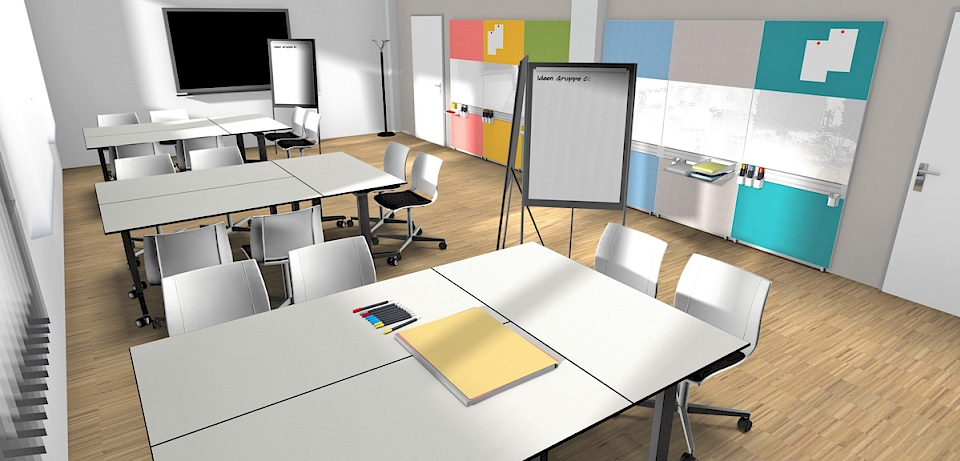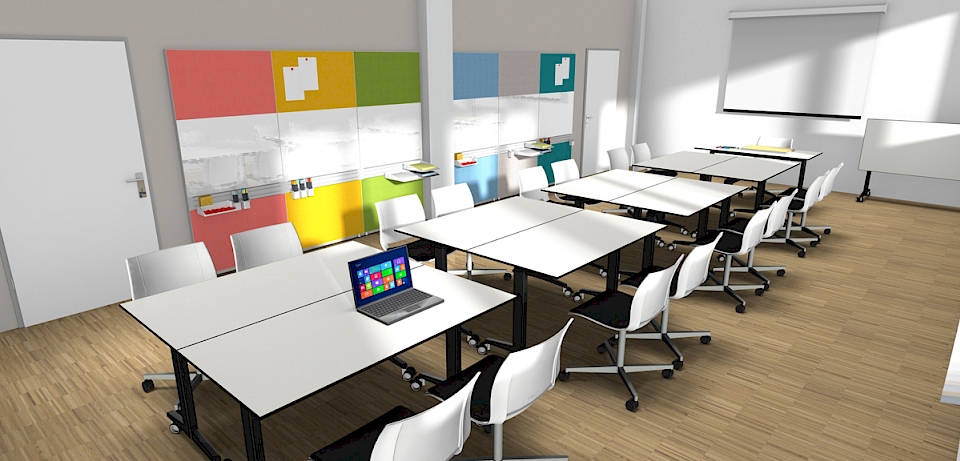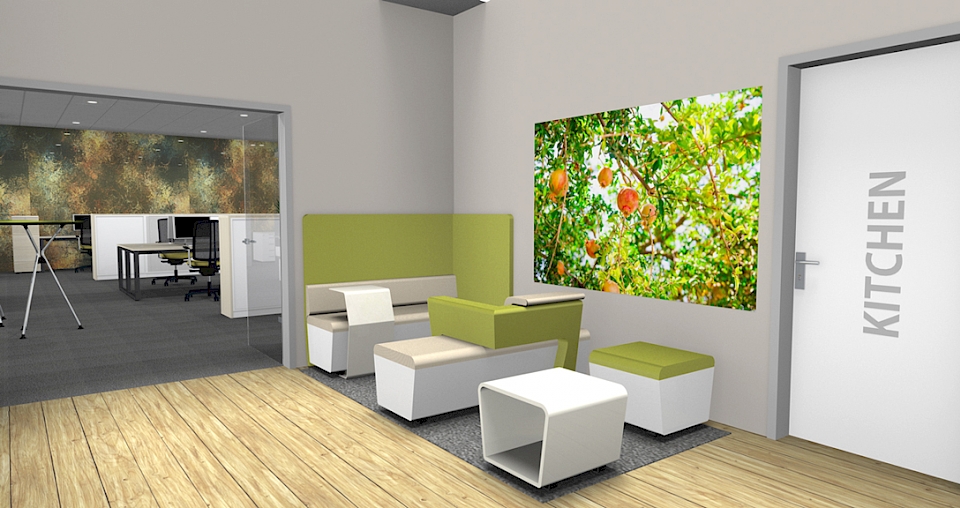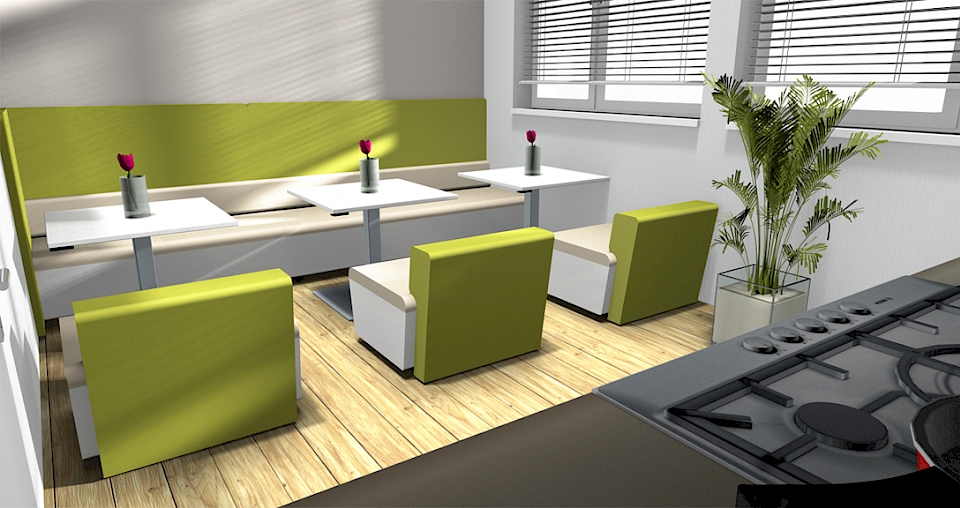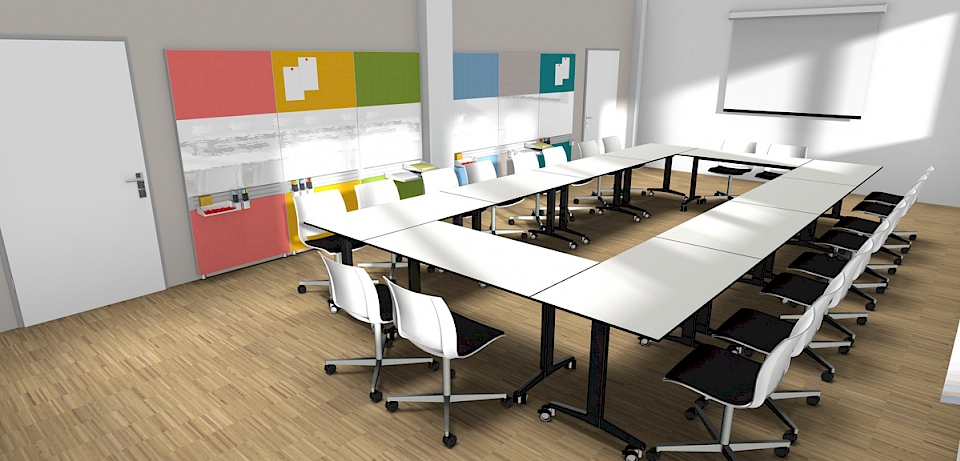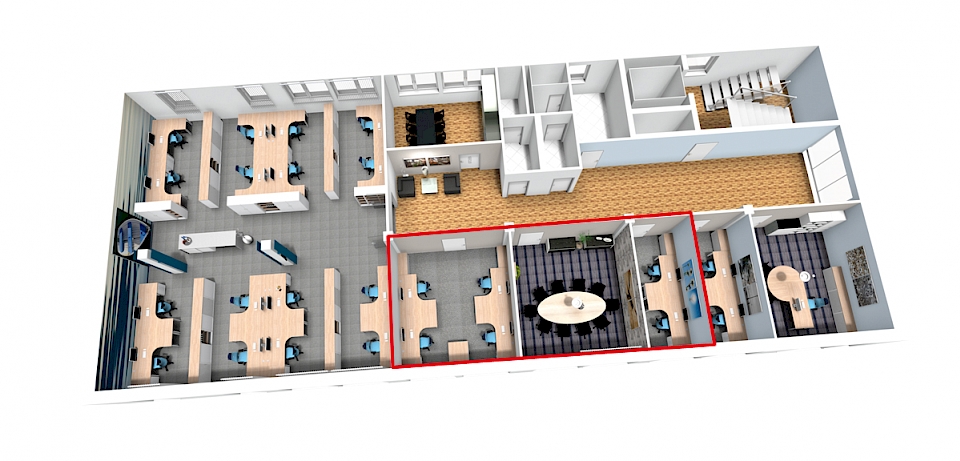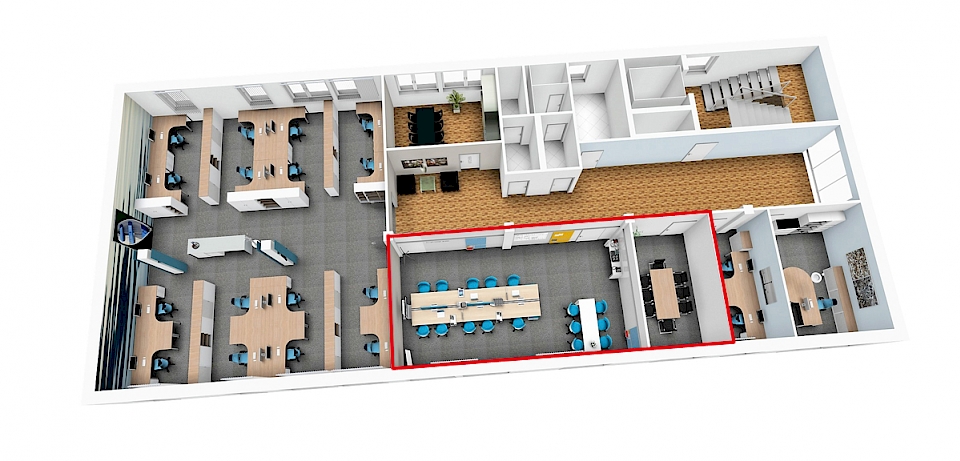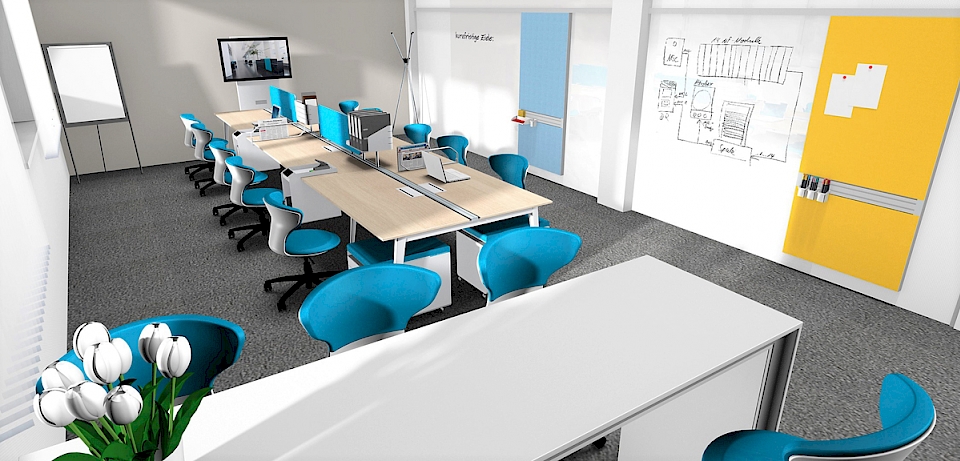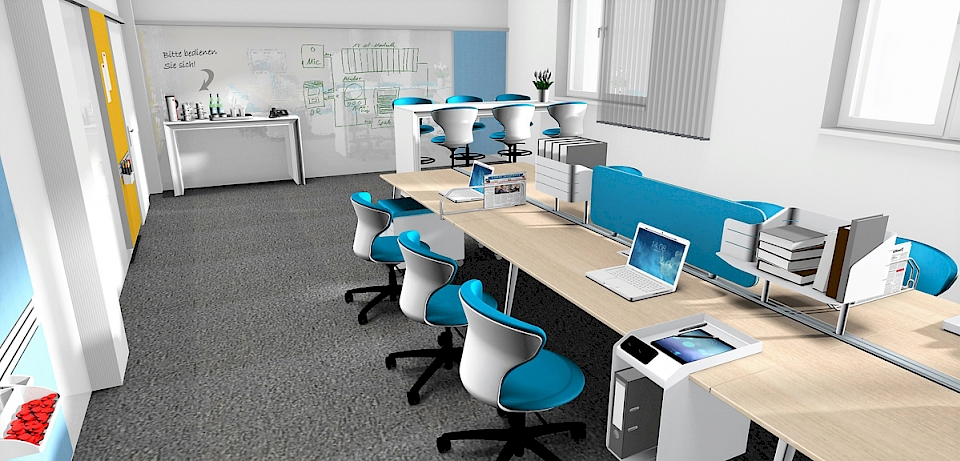
Find out more
A testing ground to standard
New ways of working can be tried out and developed further through project work. That is why it was the pioneering work mode for the new work culture for al long time. Today, project work has become the defining form of work for most people. It is therefore all the more important that the necessary conditions are created for it.

Project work can teach people to take the initiative and assume responsibility — provided a company trusts its employees and stands behind them. The resulting self-organisation frees up managers for other tasks.
A challenge for managers
To be successful, project work needs a clear framework and lots of leeway so that the participants can develop individual initiative, a sense of individual responsibility, creative ways of seeking solutions and entrepreneurial behaviour. The task of the managers is not so much to define the goals as to support the teams — for example, by providing them with the resources they need.

Leadership thus becomes the structuring of change. For many companies, this is a painful learning process, because this structuring task requires skills that they do not have in sufficient amounts.
Prof. Heiko Roehl, co-publisher and editor of the magazine for organizational development, Zeitschrift für Organisationsentwicklung (ZOE), and Managing Partner of Kessel und Kessel GmbH, quote from New Work Order study "Organisations in transition".
Digital networking
Communication and teamwork take up a lot of time in most projects. Digital collaboration platforms such as zoom or teams enable quick exchange beyond the physical workplace. Their absolute strength lies in the area of information exchange and quick coordination. At the same time, the platforms help with the documentation of projects and, through the integration of workshop modules, they even enable the joint generation of ideas. However, this is precisely where most users experience the limitations of digital collaboration. Creativity and commitment benefit from a joint presence on site.
Project rooms

In the showrooms of the IBA Forum you will find many examples of how you can support project work with suitable spaces and facilities. Keyword: Co-Area.
Project work therefore can’t be done without personal encounters. Face-to-face contact cannot (yet) be replaced by digital meetings. Spaces where people can get together must be provided. Traditional meeting and conference rooms are not really fit for this purpose.
Project rooms require flexible equipment, enough space to move around, and tools for presenting and visualizing ideas. If a company does not have such project rooms on its own premises, it can reserve spaces in a co-working centre, for example.
The project room
- should not be too perfectly designed; that is, its uses should not be predefined
- could resemble a workshop that encourages experimentation and the creation of new structures
- should not have a predefined seating arrangement but should encourage people to move around
- can be equipped with standing tables and counter stools as well as informal seating groups
- should be equipped with tools for experimentation and visualization
- can offer tools and devices for prototyping (ranging from modelling clay to Lego pieces and 3D printers)
- should be easily accessible and should be subjected to the “clean desk policy” only after the project has been completed
Restructuring of existing spaces
Example 1
Beispiel 2

In both examples, the creation of a project room means giving up smaller workrooms. In this case, the possibility of non-territorial work could be considered. In general, employees don’t especially like to give up their individual workplaces. However, this attitude changes if the areas that are opened up are used to set up communication zones, relaxation areas or project rooms. A total of 21% of employees would be happy to give up their own workplaces in that case.
Source: IBA/bso study, 2015


